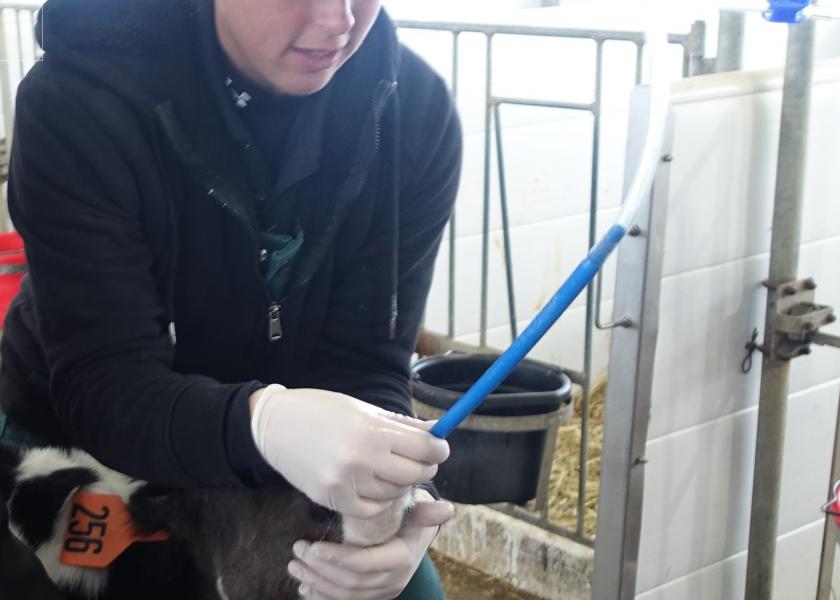Calf Tube Feeding Done Right

Colostrum, milk and electrolytes all can be vital to calf survival, and may need to be delivered via an esophageal tube feeder if calves are unable to suckle a bottle.
But tube feeders also can be the source of bacterial infections, pneumonia and even sudden death if used incorrectly. The University of Wisconsin Dairy Extension team has produced a short video demonstrating the best practices for using esophageal feeders in young calves. Their advice included:
- Before using a feeder, inspect the tube for rough edges or visible cracks. Rough tubing can cause abrasions to the calf’s esophagus. A rough surface or cracks also can harbor bacteria that can introduce gastrointestinal disease to the calf. Tube feeders damaged in these ways should be discarded and replaced.
- Calves only should be fed with a tube feeder if they can stand, or at least sit upright on their sternum. If they are lying flat or their digestive tract already is full, do not use a tube feeder, because it is much more likely you will insert the tube incorrectly and potentially drown the calf.
- Before inserting the tube, clamp or kink the tubing so no liquid can pass. Lubricate the ball tip of the tube with the liquid you are feeding.
- To insert, slide the tube down the left side of the calf’s tongue, which will cause it to swallow. Wait patiently for the calf to swallow, then pass the tube down the esophagus, while keeping the calf’s nose below its ears.
- Once inserted, you should be able to feel two distinct tubes by pressing the exterior of the calf’s neck. One is the tube feeder, and one is the trachea. If you slide the tube back and forth and can’t feel it moving, or notices sprints of air at the end of the tube, you have likely passed the tube down the trachea. Gently remove the tube and try again.
- If the tube is placed correctly, release the liquid and hold it above the calf to allow gravity to transfer it. Continue to keep the calf’s nose below its ears, and allow all of the liquid to pass into the rumen before removing the tube.
- Remove the tube in one swift, gentle motion, while holding the calf as still as possible.
Cleaning and sanitizing esophageal feeders also is essential to discourage bacterial growth. The Wisconsin educators recommended a five-step process:
- Rinse the feeder with cool (about 90˚F) water.
- Soak in hot (130˚F+) water with 1% chlorinated alkaline detergent.
- Wash with hot water (145˚F+). Use mechanical abrasion with a brush to break up fat particles from colostrum and milk.
- Rinse with cold water.
- Disinfect following directions for commercial disinfectant, and hang feeder pieces to allow them to dry thoroughly.
Finally, the team recommended purchasing separate feeders for electrolytes and colostrum/milk so one feeder always is clean, dry and available for its intended purpose.







